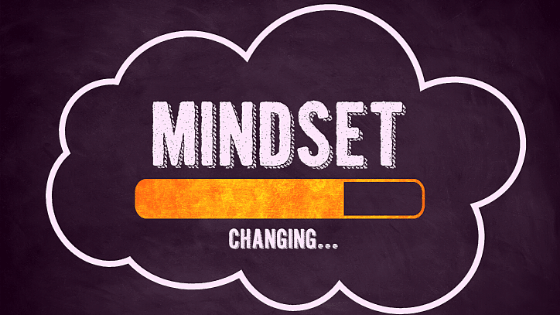Now Reading: How to Stop Overthinking: 7 Practical Strategies to Calm Your Mind
-
01
How to Stop Overthinking: 7 Practical Strategies to Calm Your Mind

How to Stop Overthinking: 7 Practical Strategies to Calm Your Mind
Do you ever find yourself lying awake at night, replaying a conversation from earlier in the day or worrying about a decision you have to make? If so, you’re not alone. Overthinking is a common struggle that affects millions of people worldwide. A 2022 study by the American Psychological Association (APA) found that 73% of adults report overthinking at least once a week, with 25% admitting it happens daily. This mental habit can feel like a never-ending loop, draining your energy, clouding your judgment, and even impacting your physical health.
As author Eckhart Tolle once said, “Overthinking is the art of creating problems that weren’t even there.” And he’s right—overthinking often magnifies small issues into overwhelming obstacles, leaving us feeling stuck and powerless. But here’s the good news: overthinking doesn’t have to control your life. With the right strategies, you can break free from this mental trap and reclaim your peace of mind.
In this article, we’ll explore 7 practical, science-backed strategies to help you stop overthinking and calm your mind. Whether you’re dealing with anxiety, stress, or just a busy brain, these techniques can help you regain control and live a more present, fulfilling life. Let’s dive in and discover how you can turn down the volume on overthinking—starting today.
1. Identify Your Triggers
What Are Overthinking Triggers?
Overthinking doesn’t happen in a vacuum—specific situations, emotions, or thought patterns often spark it. Common triggers include:
- Work Stress: Deadlines, difficult colleagues, or fear of underperforming.
- Relationship Issues: Conflicts with a partner, family member, or friend.
- Fear of Failure: Worrying about making mistakes or not meeting expectations.
- Uncertainty: Not knowing what the future holds, especially in areas like finances, health, or career.
Understanding your triggers is the first step to breaking the cycle of overthinking. As psychologist Dr. Susan Nolen-Hoeksema explains, “Overthinking often starts with a trigger, but it’s fueled by our inability to let go of the thought.”
How to Recognize Your Triggers
To identify your triggers, you need to become a detective of your own mind. Here’s how:
- Keep a Journal: For one week, write down when you notice yourself overthinking. Include:
- What happened before the overthinking started?
- What emotions were you feeling?
- What thoughts were running through your mind?
- Look for Patterns: After a week, review your journal. Do you notice common themes, like certain people, situations, or times of day?
- Ask Yourself Key Questions:
- What am I afraid of in this situation?
- What’s the worst-case scenario I’m imagining?
- Is this thought based on facts or assumptions?
Actionable Step:
This week, write down 3 situations that made you overthink. For example:
- “I overthought a presentation at work because I was afraid of being judged.”
- “I replayed an argument with my partner in my head all night.”
- “I worried about my finances after paying bills.”
By identifying your triggers, you can start to address them head-on and develop healthier coping mechanisms.
Why This Works
Recognizing your triggers helps you interrupt the overthinking cycle before it spirals out of control. It also empowers you to take proactive steps, like setting boundaries, practicing self-care, or seeking support. As the saying goes, “Awareness is the first step toward change.”
2. Practice Mindfulness
What Is Mindfulness?
Mindfulness is the practice of being fully present in the moment, without judgment or distraction. It’s about observing your thoughts, feelings, and surroundings with curiosity and acceptance, rather than getting caught up in them. As Jon Kabat-Zinn, the founder of Mindfulness-Based Stress Reduction (MBSR), explains, “Mindfulness means paying attention in a particular way: on purpose, in the present moment, and nonjudgmentally.”
When you practice mindfulness, you create a mental space between yourself and your thoughts. This space allows you to observe overthinking without getting swept away by it. Research shows that mindfulness can reduce anxiety, improve focus, and even rewire the brain to be less reactive to stress.
Simple Mindfulness Exercises
Here are two easy exercises to help you get started with mindfulness:
- 5-Minute Breathing Exercise:
- Sit in a comfortable position, close your eyes, and take a deep breath in through your nose for 4 seconds.
- Hold your breath for 4 seconds, then exhale slowly through your mouth for 6 seconds.
- Repeat this cycle for 5 minutes, focusing solely on your breath. If your mind wanders, gently bring it back to your breathing.
- Body Scan Meditation:
- Lie down or sit comfortably and close your eyes.
- Slowly scan your body from head to toe, noticing any sensations, tension, or discomfort.
- As you focus on each part of your body, take a deep breath and imagine releasing any tension with your exhale.
Actionable Step:
Try this: Set a timer for 5 minutes, sit in a quiet space, and focus on your breath. When your mind wanders (and it will!), gently bring it back to your breathing without judgment. Notice how it feels to be fully present in the moment.
3. Challenge Negative Thoughts
What Are Cognitive Distortions?
Cognitive distortions are irrational or exaggerated thought patterns that fuel overthinking and negative emotions. They distort reality, making situations seem worse than they are. Common cognitive distortions include:
- Catastrophizing: Assuming the worst will happen (e.g., “If I fail this test, my life is over.”).
- Black-and-White Thinking: Seeing things as all good or all bad, with no middle ground (e.g., “If I’m not perfect, I’m a failure.”).
- Overgeneralization: Taking one negative event and applying it to everything (e.g., “I messed up once, so I’ll always mess up.”).
- Mind Reading: Assuming you know what others are thinking (e.g., “They’re probably judging me.”).
These distortions keep you stuck in a cycle of overthinking and anxiety. As psychologist Dr. Aaron Beck famously said, “It’s not the situation that determines how we feel, but the way we think about it.”
How to Reframe Negative Thoughts
Reframing is the process of challenging and replacing negative thoughts with more balanced, realistic ones. Here’s how to do it:
- Identify the Thought: Write down the negative thought that’s bothering you.
- Example: “I’ll never be good enough at my job.”
- Ask Key Questions:
- “Is this thought true?”
- “What’s the evidence for and against it?”
- “What would I say to a friend who had this thought?”
- Reframe the Thought: Replace the negative thought with a more balanced one.
- Example: “I’m still learning, and it’s okay to make mistakes. I’ve had successes at work too.”
Actionable Step:
Try this: Write down a negative thought you’ve had recently. Then, challenge it by asking:
- “Is this thought 100% true?”
- “What evidence do I have that supports or contradicts it?”
- “How can I reframe this thought to be more realistic and kind to myself?”
For example:
- Negative Thought: “I’ll never get this right.”
- Reframed Thought: “I’m improving with practice, and it’s okay to take my time.”
Related: 7 Ways to Help a Loved One with Mental Health Struggles
4. Set a “Worry Time”

What Is Worry Time?
Worry time is a structured, intentional practice where you allocate a specific period each day to focus on your worries. Instead of letting overthinking consume your entire day, you contain it to a designated time slot. This technique, often used in Cognitive Behavioral Therapy (CBT), helps you take control of your thoughts rather than letting them control you.
As psychologist Dr. Robert Leahy explains, “Worry time gives your brain permission to worry—but only during a specific time. This helps you stop worrying all day long.”
How to Implement Worry Time
Here’s a step-by-step guide to creating your worry time:
- Choose a Time: Pick a consistent time each day (e.g., 6:00 PM) when you can dedicate 15–20 minutes to processing your worries. Avoid doing this right before bed, as it may interfere with sleep.
- Set a Timer: Use a timer to stick to your allotted time. This creates a clear boundary for your worries.
- Write It Down: During worry time, write down everything that’s bothering you. Be as specific as possible.
- Example: “I’m worried about my presentation at work tomorrow. What if I forget my points?”
- Reflect and Release: Once the timer goes off, close your journal and let go of your worries until the next worry time. Remind yourself that you’ve already given your concerns the attention they need.
Actionable Step:
Schedule your worry time today and stick to it. For example:
- Set a daily alarm for 6:00 PM.
- Spend 15 minutes writing down your worries.
- When the timer ends, take a deep breath and move on with your day.
5. Focus on Problem-Solving
The Difference Between Overthinking and Problem-Solving
Overthinking and problem-solving may seem similar, but they’re fundamentally different. Overthinking involves dwelling on the problem—replaying it in your mind, imagining worst-case scenarios, and feeling stuck in a loop of worry. Problem-solving, on the other hand, is about finding solutions and taking action to address the issue.
As author Tony Robbins puts it, “The path to success is to take massive, determined action.” Overthinking keeps you paralyzed, while problem-solving moves you forward.
Steps to Effective Problem-Solving
Here’s a simple framework to shift from overthinking to problem-solving:
- Define the Problem: Clearly identify what’s bothering you. Be specific.
- Example: “I’m worried about my upcoming presentation at work.”
- Break It Down: Divide the problem into smaller, manageable steps.
- Example:
- Step 1: Outline the key points of the presentation.
- Step 2: Practice delivering it in front of a mirror.
- Step 3: Ask a colleague for feedback.
- Example:
- Take Action: Focus on one small step at a time. Progress, no matter how small, builds momentum.
- Evaluate and Adjust: After taking action, assess what worked and what didn’t. Adjust your approach as needed.
Actionable Step:
Identify one small step you can take today to address a worry. For example:
- If you’re worried about finances, your step could be: “Create a budget for the month.”
- If you’re stressed about a work project, your step could be: “Spend 30 minutes brainstorming ideas.”
Why This Works
Problem-solving works because it shifts your focus from the problem to the solution. Instead of feeling overwhelmed, you take control by breaking the issue into actionable steps. This approach:
- Reduces Anxiety: Taking action gives you a sense of control and accomplishment.
- Builds Confidence: Each small step reinforces your ability to handle challenges.
- Prevents Overthinking: When you’re focused on solutions, there’s less room for unproductive rumination.
As Albert Einstein famously said, “We cannot solve our problems with the same thinking we used when we created them.” Problem-solving requires a shift in mindset—from worrying to taking action.
6. Practice Gratitude

How Gratitude Reduces Overthinking
Gratitude is a powerful tool for shifting your focus from problems to positives. When you’re stuck in a cycle of overthinking, your mind tends to zoom in on what’s wrong or what could go wrong. Practicing gratitude helps you reframe your perspective and notice the good things in your life, no matter how small.
Research shows that gratitude can:
- Reduce Stress: Focusing on what you’re thankful for lowers cortisol levels, the stress hormone.
- Improve Mental Health: Studies have linked gratitude to lower rates of depression and anxiety.
- Enhance Resilience: Grateful people are better at coping with challenges and bouncing back from setbacks.
As Oprah Winfrey once said, “Be thankful for what you have; you’ll end up having more. If you concentrate on what you don’t have, you will never, ever have enough.”
Simple Gratitude Practices
Here are two easy ways to incorporate gratitude into your daily life:
- Gratitude Journal: Each day, write down 3 things you’re grateful for. They can be big or small—anything from a kind gesture from a friend to a beautiful sunset.
- Example: “I’m grateful for my morning coffee, my supportive partner, and the walk I took in nature today.”
- Gratitude List: If journaling feels like too much, simply make a mental list of things you’re thankful for before bed.
Actionable Step:
Before bed, write down 3 things that went well today. Over time, this practice can help you develop a more positive mindset and reduce overthinking.
7. Seek Professional Help if Needed
When to Seek Help
While the strategies above can be helpful, there are times when overthinking becomes too overwhelming to handle on your own. Here are some signs it might be time to seek professional help:
- Overthinking interferes with your daily life (e.g., work, relationships, sleep).
- You experience severe anxiety, depression, or panic attacks.
- You feel stuck and unable to break the cycle of overthinking, despite your best efforts.
Asking for help is a sign of strength, not weakness. As Brene Brown says, “Vulnerability is the birthplace of innovation, creativity, and change.”
Types of Professional Support
Here are some options for professional help:
- Therapy: A licensed therapist can help you explore the root causes of overthinking and develop coping strategies. Cognitive Behavioral Therapy (CBT) is particularly effective for overthinking and anxiety.
- Counseling: A counselor can provide guidance and support for managing stress and improving mental health.
- Support Groups: Connecting with others who share similar struggles can provide comfort, validation, and practical advice.
Actionable Step:
If overthinking feels overwhelming, consider reaching out to a mental health professional. Start by researching therapists in your area or asking for recommendations from trusted friends or family. Many therapists also offer virtual sessions, making it easier to access support.
Why This Works
Seeking professional help works because it provides you with tools, guidance, and support tailored to your unique needs. A mental health professional can help you:
- Understand the underlying causes of overthinking.
- Develop personalized strategies to manage it.
- Feel less alone in your struggles.
As the saying goes, “You don’t have to do it all alone. You were never meant to.”
Conclusion
Overthinking can be exhausting, but with the right strategies, you can break free from the cycle. Start by identifying your triggers, practicing mindfulness, and challenging negative thoughts. Remember, progress takes time, so be patient with yourself. Each small step you take brings you closer to a calmer, more focused mind.
Which of these strategies will you try first? Share your thoughts in the comments below or tag a friend who might benefit from this article! Let’s support each other in overcoming overthinking and living more mindfully.
FAQs
Q: Is overthinking a sign of anxiety?
A: Yes, overthinking is often linked to anxiety. If it persists and interferes with your daily life, consider seeking professional help.
Q: How long does it take to stop overthinking?
A: It varies, but with consistent practice, many people see improvements within a few weeks. Be patient and kind to yourself as you work through it.
Q: Can overthinking be cured?
A: While it may not be “cured” entirely, it can be managed effectively with the right tools and strategies, such as mindfulness, problem-solving, and therapy.
Q: What’s the difference between overthinking and problem-solving?
A: Overthinking involves dwelling on the problem without taking action, while problem-solving focuses on finding solutions and taking steps to address the issue.





















* * * Snag Your Free Gift: https://jizanperfumes.com/?2uk2a6 * * * hs=f9db15bd38a06e05bf889db1d7d074df*
090fmg
* * * Unlock Free Spins Today * * * hs=f9db15bd38a06e05bf889db1d7d074df*
dkvxhs
Eduardo320
Good https://is.gd/tpjNyL